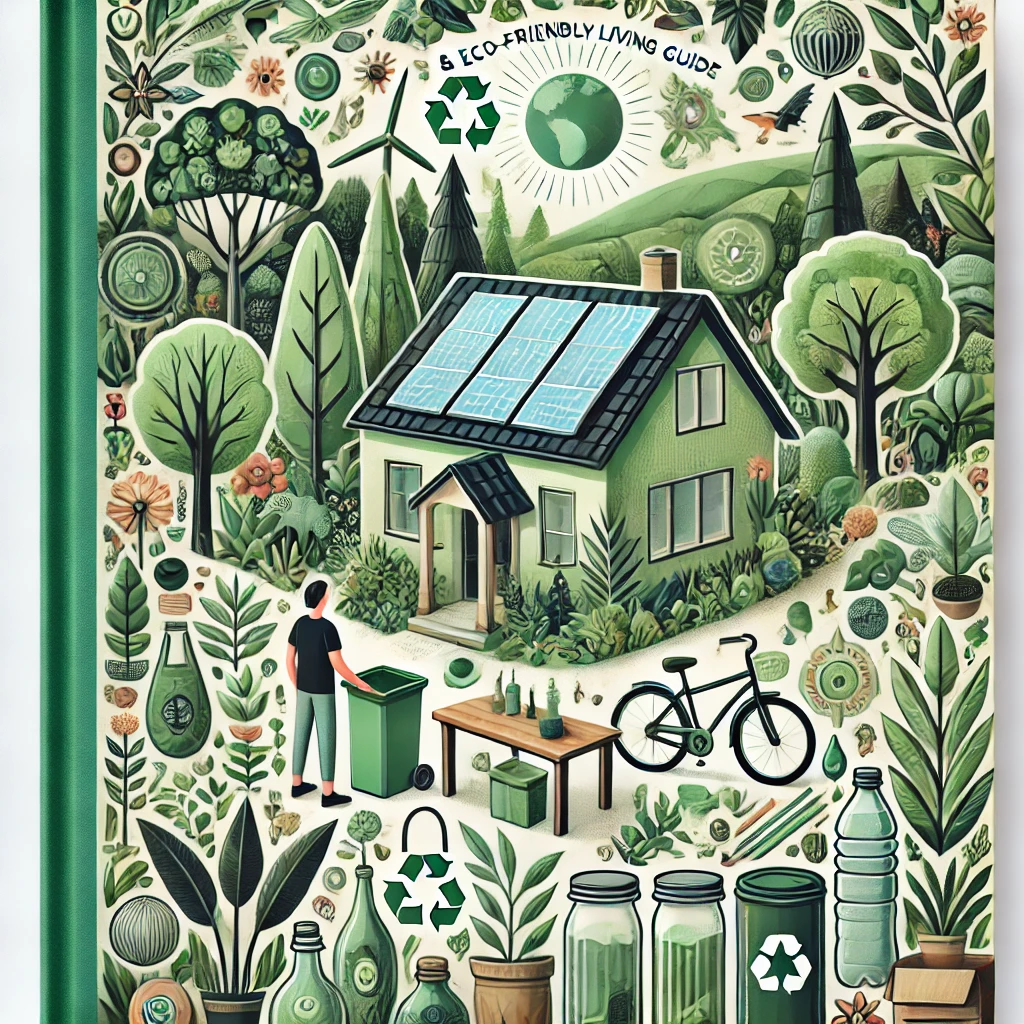
Sustainable Living and Eco-Friendly
A Guide to Sustainability and Eco-Friendly Living: Simple Steps to Make a Difference


DINKAR
11/11/2024
Introduction: In today’s world, embracing sustainability and eco-friendly living is no longer a trend but a necessity. As environmental challenges grow, adopting sustainable habits helps reduce our ecological footprint, conserve resources, and promote a healthier planet. This guide explores simple, actionable ways to make your lifestyle more eco-friendly, focusing on conscious choices that have a positive impact. From reducing waste and conserving energy to making sustainable shopping choices, this article covers everything you need to start or improve your journey toward a greener lifestyle.
What Is Sustainability and Why Does It Matter?
Sustainability is the practice of using resources in a way that meets our current needs without compromising the ability of future generations to meet theirs. Living sustainably involves making choices that help maintain ecological balance, preserve biodiversity, and reduce pollution. By adopting an eco-friendly lifestyle, we can play a part in tackling climate change, protecting ecosystems, and supporting communities worldwide.
1. Reduce, Reuse, and Recycle
The 3 R's of waste management—Reduce, Reuse, and Recycle—are fundamental principles for sustainable living. Here’s how you can apply each in daily life:
- Reduce: Buy less and choose items with minimal packaging. Cutting down on single-use plastics and disposable products is one of the easiest ways to reduce waste.
- Reuse: Opt for reusable bags, containers, and water bottles. Look for creative ways to repurpose household items rather than discarding them.
- Recycle: Familiarize yourself with local recycling guidelines and separate materials properly. Recycling helps reduce landfill waste and saves valuable resources.
2. Choose Sustainable Products
Opting for products with eco-friendly certifications, such as Fair Trade, Organic, or B Corporation, ensures that they’re produced sustainably. Look for items made from natural, biodegradable materials like bamboo, organic cotton, and recycled plastic. Supporting companies that prioritize environmental responsibility helps promote sustainable practices in the market.
3. Minimize Energy Consumption
Reducing energy usage not only lowers your electricity bill but also decreases carbon emissions. Here are a few ways to make your home more energy-efficient:
- Switch to LED Bulbs: LED lights use up to 80% less energy and last longer than traditional bulbs.
- Use Energy-Efficient Appliances: Look for ENERGY STAR-certified appliances that use less power without sacrificing performance.
- Unplug Devices: Many devices continue to draw power even when turned off. Unplug electronics when not in use or use a smart power strip.
4. Embrace Renewable Energy
Switching to renewable energy sources like solar or wind power is a powerful way to reduce your environmental impact. If switching fully to solar panels isn’t feasible, consider smaller solar-powered devices like phone chargers or garden lights. Some energy companies also offer renewable energy plans that let you support clean energy without changing your setup.
5. Conserve Water
Water conservation is another key aspect of eco-friendly living. Small changes can significantly reduce water usage:
- Fix Leaks: A single dripping faucet can waste gallons of water daily.
- Install Low-Flow Fixtures: Low-flow showerheads and faucets save water without sacrificing water pressure.
- Limit Shower Time: Shortening your showers by even a few minutes can save thousands of gallons of water yearly.
6. Adopt a Plant-Based Diet
The food industry has a massive impact on the environment, from deforestation to greenhouse gas emissions. Incorporating more plant-based meals into your diet reduces your carbon footprint, as plant-based foods generally require fewer resources to produce than animal products. You don’t have to go completely vegetarian or vegan; even a few meat-free days each week can make a difference.
7. Shop Local and Support Sustainable Brands
Buying locally reduces transportation emissions and supports your community’s economy. Look for farmers’ markets or shops that source products locally. Additionally, support sustainable brands that prioritize eco-friendly practices and transparent supply chains.
Key tips for sustainable shopping:
- Choose items with minimal packaging.
- Opt for products made with organic, biodegradable materials.
- Look for brands with certifications like Fair Trade or Rainforest Alliance.
8. Practice Sustainable Transportation
Transportation is one of the largest contributors to greenhouse gas emissions. By changing your travel habits, you can significantly reduce your environmental footprint.
- Walk or Bike: For short trips, walking or biking is both eco-friendly and beneficial for your health.
- Use Public Transportation: Taking buses, trains, or other public transit options lowers individual carbon emissions.
- Carpool: Sharing rides with others reduces the number of vehicles on the road, helping reduce emissions.
9. Green Your Home with Indoor Plants
Indoor plants not only beautify your space but also improve indoor air quality. Many plants absorb pollutants and release oxygen, creating a healthier indoor environment. Some low-maintenance, air-purifying plants include:
- Snake Plant – Great for removing toxins and doesn’t require much light or water.
- Spider Plant – Helps remove formaldehyde and xylene from the air.
- Aloe Vera – Known for its air-purifying properties and requires minimal care.
10. Educate Yourself and Advocate for Change
Staying informed about environmental issues empowers you to make more sustainable choices. Share your knowledge with friends and family, and advocate for policies that support environmental protection. Small, personal actions can collectively lead to meaningful change when communities work together.
Eco-Friendly Living: The Long-Term Benefits
While adopting sustainable practices may seem challenging, the long-term benefits make it worthwhile. Living eco-friendly promotes a healthier lifestyle, reduces waste, and often leads to financial savings. From healthier air and cleaner water to conserving natural habitats, the positive impact on the planet and society is invaluable.
Conclusion
Sustainable, eco-friendly living starts with small changes. By implementing the tips in this guide, you can make a lasting, positive impact on the environment while leading a healthier, more mindful lifestyle. Every choice you make—from the products you buy to the energy you use—plays a role in shaping a greener future for everyone.